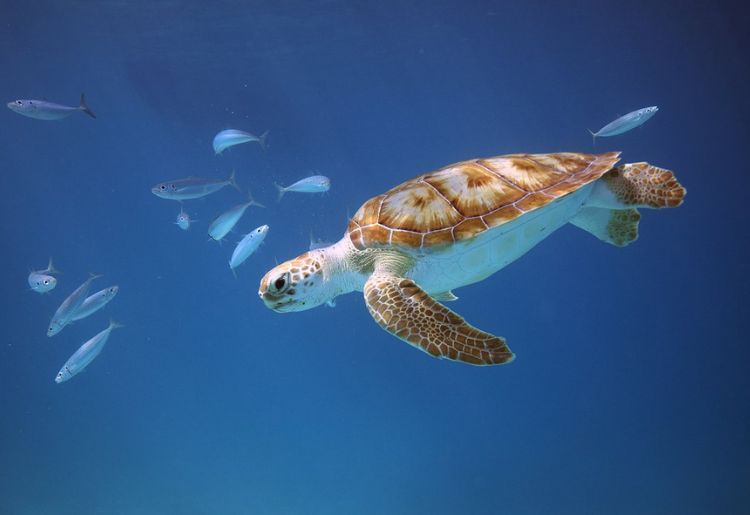Since its founding over 25 years ago, the Barbados Sea Turtle Project has been working to save sea turtles in Barbados. The project falls under the Department of Biological & Chemical Sciences in the Faculty of Science and Technology at the University of the West Indies Cave Hill Campus. It is a conservation and research project that aims to restore local marine turtle populations in Barbados, the Caribbean and the Americas. Because Barbados is a tourism-oriented country, there are several challenges and opportunities that the project must consider as it works towards its mission.
About the Barbados Sea Turtle Project
There was a time when the population of the hawksbill turtle declined because of the deterioration of nesting beaches and illegal harvesting in countries where turtles spent their developmental years. That inspired the creation of the Barbados Sea Turtle Project. The original mandate of the project was to recover the critically endangered hawksbill and their nesting habitats. To achieve this mission, the team aimed to:
- Apply scientifically sound conservation measures which would be supported by public education programmes
- Establish monitoring programmes that would continually assess the turtle population and the effectiveness of the programme
- Conduct research that would improve the conservation measures in place
Over the years, the programme has been expanded to include all sea turtles in Barbados’ waters and those that visit for nesting. Barbados is an important island in the sea turtle eco-system. Four species visit the island – hawksbill turtles, green turtles, leatherback turtles and loggerhead turtles. Of these, over 600 hawksbill and leatherback turtles visit Barbados each year to nest along all four coasts. On rare occasions, loggerheads choose to nest on the island. Green turtles, which nest in Costa Rica, Mexico and Ascension Island migrate to Barbados after birth.
The sea turtle project has achieved much success in its programmes over the years. Population numbers have increased and public awareness has improved considerably. The Barbados Sea Turtle Project has developed partnerships with locals, businesses and government agencies who all monitor beaches and respond to emergencies.
Project Activities
Carla Daniel, who does double duty as Field Director and Director of Public Awareness and Education, coordinates the day-to-day activities of the project. Through social media, she documents the team’s responses to emergencies, data collection and analysis of sea turtle nests, and hatchling releases into the sea. Carla and her team also engage in several activities which include:
- Monitoring beaches on all coasts for nesting activity
- Relocating at-risk nests to safer sites close to the original site
- Excavating nests after hatchings to determine hatching success
- Tagging, measuring and weighing sea turtles
- Rescuing turtles that wander inland and become trapped
- Collecting and releasing disoriented sea turtle hatchlings
- Rehabilitating weak and stranded sea turtles
- Collecting tissue samples from sea turtles for research purposes
- Monitoring movements of hawksbill turtles with satellite transmitters




